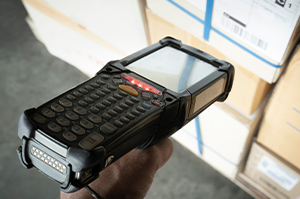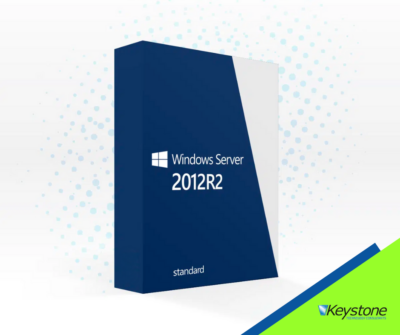
Our company, Keystone Technology Consultants works with a LOT OF manufacturing companies. One thing we see as a repeated win for these companies is the ability to use barcode scanners in manufacturing, as an integrated part of the process. Organizations that do this receive multiple benefits, including cost savings from less typing when looking up or entering information. Instead of a warehouse worker keying in a part number, then rekeying it, and then perhaps entering the wrong part number, they just grab a handy barcode scanner and trigger it for a correct part number. Other benefits we have seen are the ability to expand operations: better tracking of parts allows the company to expand operations with less risk, and lower inventory on hand, because the inventory available was more accurately recorded. And sometimes barcoding is mandatory to meet the requirements of customers (particularly big box retailers, and government or UL/CSA regulations). Beyond this, the benefits include improved real-time data collection for management reporting, increased accuracy in data collection, and traceability (who was logged in when scanning?).
Some technology is very new (video conferencing from any device, virtual applications, etc.) but barcoding was first patented in 1952, so it has been around for a while. Barcoding is now prevalent, primarily because of e-commerce where smaller, more frequent shipments (drop ships) require more shipments due to increased transactions. The increased needs of the Just In Time (JIT) inventory process increased the transaction count. I developed barcode scanning solutions in 1990 while in the Air Force, because it allowed our shipments to expand to daily instead of weekly, reducing our inventory by almost 70%. These increased transactions and lower on hand inventory increase risks of stock out conditions, so the increased accuracy of barcode scanning is mandatory). Make to Order is very similar because there are often financial incentives to meet in these contracts, and an inability to have a part in the right place at the right time will kill these opportunities. And finally, when optimizing warehouse space, smaller denser inventory storage means more locations and more transactions to store and pick from, necessitating bar code scanning to improve efficiencies and accuracy.
Barcode Scanners in Manufacturing Applications
So where can we use this technology? There are many areas, including:
- Receiving: Scan the part when received, or print a label for ongoing internal transactions like store, pick, and shipment.
- Raw materials inventory transactions.
- Picking stock for sales orders or to issue to work centers as part of the manufacturing process.
- Work in Process (WIP) tracking for real time management of jobs.
- Product Identification for in process tracking for sub-components or finished goods ready to ship to customers.
- Shipping Labels to ensure delivery to the right customer, to meet their receiving requirements, and to track progress while in shipment.
- And finally, marketing, using QR codes to promote products and direct customers to a point where they can purchase.
Types of Barcodes in Manufacturing
There are multiple technical standards for barcodes; using the wrong one may affect your future ability to use the barcode or meet requirements of customers. These include:
- 1 Dimensional Barcodes: These are the traditional barcodes you are most likely to see, and include UPC codes, Barcode 39, 128, etc. They are linear, or one dimensional in the sense we only need to scan across the barcode, observing the width and distance between the vertical bars to interpret the results.
- 2 Dimensional (2D) Barcodes: More space conscious: these two-dimensional matrices of black and white “cells” vs. bars are commonly used for small parts and products, as they can encode up to 50 characters into tiny barcodes, readable at sizes as small as 2mm. An example is the PDF417 standard.
- RFID: these are not so much barcodes as they are radio frequency tags embedded in the product that a radio scanner can read to determine what the resulting information corresponds to. This is much of the basis of the Amazon Go Store. There is no scan in the sense that an operator must point a handheld scanning gun at a barcode; instead the item with the embedded RFID chip just must pass through a scanning area. This reduces the work load and provides the ability to allow almost anyone the ability to move products through a process much quicker.
Software Prevalent in Barcode Scanner in Manufacturing
Software (and hardware covered below) is core to the process. Start with your ERP, MRP, Line of Business Application. Because this is where your main database is for parts, orders, inventory, and WIP is located, it allows a much tighter integration for data validation and real-time reporting. Start with your key system(s) to see what barcoding functionality they support as inherent components or add on modules.
You may also consider some standalone software for small needs, such as WASP. This allows functions like inventory or asset tracking with a low entry cost.
Sometimes even a cell phone may be used for barcoding applications, particularly QR codes or embedded in applications like Amazon’s mobile app.
Hardware Needed for Barcode Scanners in Manufacturing
You will need hardware and infrastructure to support Barcoding in Manufacturing. This starts with good Wi-Fi. To provide the most flexible approach to operators moving about the facility working with materials, a solid Wi-Fi network is essential. It will improve the reliability of the scanning and inventory management operation into all parts of the facility. Start with a wireless survey and invest in good equipment; scrimping in here will cost you later.
You will also need good barcode printers. While we have seen organizations use dot matrix printers, these are problematic. Focus on three things: Clean prints, long lasting ink, and good adhesive properties. Any problems in these areas will compound later and make product identification and scanning difficult. Good barcode printers include thermal printers available from Zebra. These printers are industrial strength and pay for themselves in the long run. You may also consider mobile printers, like those mounted on a fork lift, or even worn on a belt. Two aspects to look for in better printers include Unicode support for printing in multiple languages, and remote monitoring and configuration, to reduce support costs and improve long term uptime.
And finally, you will need good scanning devices. These may include handheld devices from Symbol, Intermec, and others. Consider fork lift mounted scanners, wedge scanners (wedged between the keyboard and computer, so any field can be filled with a scan, even if the software does not support it), and finally a fixed station scanner, like what you may see at a grocery store self-checkout, to quickly scan smaller items through a process.
How do I get started with Barcode Scanners in Manufacturing?
You may have already picked up on some themes, but here are more definitive steps to follow:
- Check with your ERP Vendor – see what built in capabilities or requirements exist to integrate bar codes scanners in your ERP/MRP/Line of Business Application.
- Get your inventory locations barcoded – In order to effectively and efficiently store and pick inventory, the locations you store materials in should be barcoded. Check with your ERP or MRP software vendor, but this is advised/required to use barcodes in these recurring operations. This usually as simple as generating a lot of durable barcode labels that correspond to your inventory locations (e.g. shelves, bins, pallets, etc.)
- Check with your Suppliers, Customers, and any government or industry compliance requirements. This will speed your ability to work across organizations and increase the value of your external relationships.
- Purchase the needed equipment or software. Consider:
- Purchase quality components – unreliable equipment will severely impact the process and become a hindrance to the process, removing all of the expected value.
- Get extended service warranties that cover damage – these are relatively expensive components used in an industrial environment by workers that may be prone to quick actions. We have seen many scanners run over by forklifts, etc.
- Consider expandability and flexibility – the ability to print or scan other barcode formats later can be helpful when you want to work with a new customer or expand capabilities.
- Consider Security – You will have more devices on the network, and any device represents an entry point for viruses, malware, or malicious activity. Make sure the device is secured and can be managed by the IT support team.
- Wireless Expansion – a solid wireless network is essential, so make sure every area where scans may occur have solid, reliable Wi-Fi access; this may include all inventory locations, inside trucks at the dock, and even locations outside the facility, which may encompass outside pallets, or third party logistics (3PL) warehouses.
Have a starting point for getting the most out of barcoding in manufacturing; it is a nuanced process and tweaks can increase your return on Investment. Contact us at Info@KeystoneCorp.com to see how we can help you with this.



